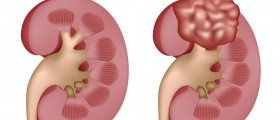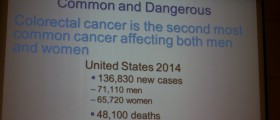
Renal cell carcinoma is a medicinal term for cancer of thekidneys which occurs in the lining of the proximal convoluted tubule. For thosewho do not know, these are very small tubes located in the kidneys and they arein charge of filtering the blood and removing all waste products from it. Renalcell carcinoma may also sometimes be referred to as hypernephroma. It isactually the most common type of kidney cancer in adult persons. Unfortunately,it is also among the most lethal types of cancer. It cannot be treated bychemotherapy or radiation therapy, even though some cases may be treated byimmunotherapy to a certain extent. There are also some therapies which mayimprove the overall outlook of the disease and these include sorafenib,interferon alpha, bevacizumab, temsirolimus and sunitinib. The incidence ofrenal cell cancer has always been on a slow gradual rise. There are at least50,000 newly diagnosed cases of renal cell cancer in the United States eachyear. It occurs in men much more than it occurs in women, and the ratio isapproximately 6 male to 1 female cases. It is also important to point out thatit affects African American people much more than it affects white people.
Risk Factors
There are certain risk factors which can sometimes beassociated with higher incidence rate of renal cell cancer in some cases.Obesity and cigarette smoking will always be among the factors which contributeto the development of renal cell cancer the most. A family history of thedisease may also be a very potent risk factor, and the same can be said for themedical condition known as hypertension. Persons who indulge in occupationalexposure to cadmium are much more prone to renal cell cancer. Dialysis patientswho suffer from cystic disease of the kidney are at 30 times greater risk ofdeveloping renal cell cancer than general population. Some cases of renalcell cancer may be associated with exposure to gasoline, polycyclic aromatic hydrocarbonsand asbestos as risk factors. An increased risk of renal cell cancer can beadditionally observed in persons who suffer from certain medical conditions such as sicklecell trait, Birt Hogg Dube syndrome, hereditary leiomyoma RCC syndrome,hereditary papillary renal cancer and von Hippel Lindau disease. Women who havehad hysterectomy are also at double risk of developing renal cell cancer.
Signs and symptoms
Depending on the areas which are affected, renal cellcarcinoma may be manifested through a wide variety of symptoms. Most advancedcases of this dreadful medical condition can easily be characterized by a largeabdominal mass, flank pain and blood in the urine. In most cases, renal tumorsare detected completely incidentally during the imaging for some other unrelatedmedical problem. Abdominal mass occurs in 25 percent of the cases, flank painoccurs in approximately 40 percent of cases, while abnormal urine colortriggered by the presence of blood in the urine occurs in 60 percent of all cases of renal cell cancer. A person who suffers from renal cell cancer maysuffer from severe weight loss, night sweats, elevated levels of calcium in thebody, constipation, plethora, pallor and certain vision abnormalities. Somecases of renal cell cancer may include symptoms such as the Stauffer syndromewhich is a non metastatic liver disease, excessive growth of the hair andpolycythemia which occurs in 5 percent of cases of renal cell cancer. Theenlargement of a testicle triggered by the blockage of the left testicular veinby tumor invasion of the left renal vein may also occur in 2 percent of allcases of renal cell cancer. 30 percent of cases may include anemia triggeredby the depression of erythropoietin. Also one may sometimes experience additional health issues because of increased production of red blood cells due to increased secretion oferythropoietin. Anorexia and malaise are commonly present in 30 percent ofcases of renal cell cancer. There are cases of renal cell cancer which involve several other symptoms such as the loss of appetite, swelling ofthe ankles, swelling of the legs, chronic fatigue, painful sensations inthe back, an increased intolerance to cold and recurrent fevers which affect upto 9 percent of patients who suffer from this medical condition.
Survival Rate
The survival rate can only be predicted by determining theexact stage of the disease. There are certain factors and characteristics of the tumor which may indicateshorter life expectancy than usual. Those factors include low performancestatus, less than a year from diagnosis to the need for systemic treatment,cancer spread to 2 or more distant sites, low red blood cell count, high levelsof calcium in the blood and high levels of blood lactate dehydrogenase. Those who do not have anything of the aforementionedusually have a good prognosis.

















Your thoughts on this
Loading...